#kalevala's mythology
Text

Fairy Maidens of the Waters
1919/20
Artist : Joseph Alanen (1885-1920)
5K notes
·
View notes
Text
My theory on Sampo's true identity...
(Minor Spoilers for 2.4) (also, I’m no expert in… anything, really, but these are just my ramblings).
So, this has probably been mentioned before, but I have a teeny-tiny theory about Sampo’s true identity, and it relates to Finnish mythology.
So, “Sampo” in and of itself doesn’t have a set meaning, but it has its roots in Finnish mythology, particularly the “Kalevala” which is a 19th-century compilation of epic poetry. In it, a blacksmith god by the name of Seppo Ilmari(nen) forges the mythical device known as “The Sampo”. It’s never quite explained what The Sampo really is; some versions depict it as a mill, others as a cornucopia from which bountiful creations flow from, and some even have it as being a world tree/world pillar, so what The Sampo really is, isn’t entirely known. But, what is known, is that it brought riches and good fortune to its holder (again, the same as the cornucopia from Greek mythology).
But why am I mentioning all of this? Why bring up the Kalevala? It could be that Hoyo just chose the name “Sampo” for some flavour—befitting of a character who magics up relics from seemingly thin air and is trying to create riches—and yeah, it’s a possibility…
Until I saw these two screenshots from the 2.4 story:
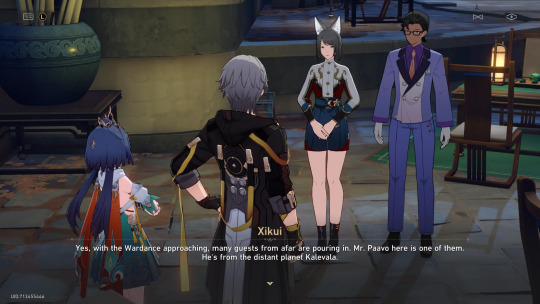
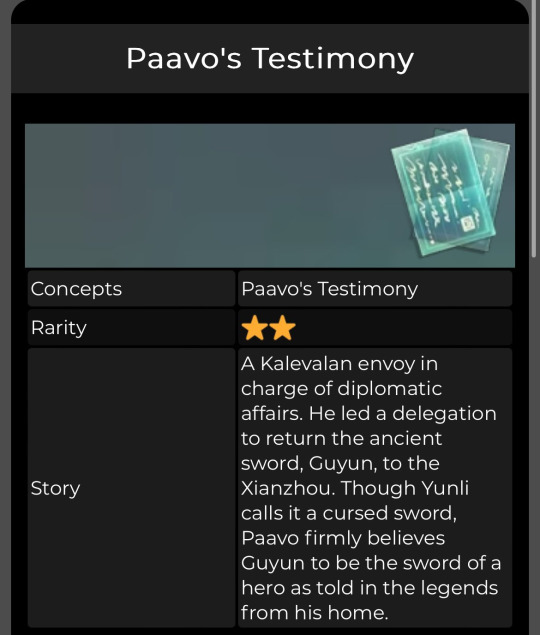
You know what this means, right?
Kalevala is a real planet in Hoyo’s Star Rail universe, and I find it awfully coincidental that they would use this name for a planet and not have it related to a certain blue haired conman, especially since The Sampo is such a pivotal element in the plot of the Kalevala—there is no way this is a coincidence (I refuse to believe it).
This leads me to believe that Kalevala is Sampo’s real home world, and is where he originates from.
Now, this is all well and good, knowing where “The Sampo” hails from, but I want to focus on its creator—Seppo Ilmari(nen)—and his parallels to a certain blue haired conman. For one, Ilmari(nen)’s name is quite interesting as the ‘Ilma’ part is Finnish for ‘air’ or ‘weather’, and as we know, Sampo’s element is that of ‘wind’ (And also the fact that Ilmari(nen) is credited as “Godlike smith-hero and creator of the sky”. I could go into a whole spiel about Ilmari(nen) and Qlipoth swinging their giant hammers in tandem together for all eternity (Go Sampard! Geppie is Qlipoth's true heir, you can't convince me otherwise!), but that’s for another conspiracy theory lol).
So, ‘Ilma’ means ‘air’, and Sampo wields ‘wind’.
Cool.
If the parallels ended there, I’d just say I was being crazy… but there’s more.
Sampo’s 4th (and arguably best) eidolon is called “The Deeper the Love, the Stronger the Hate”. Two out of his six eidolons refer to 'love', whilst the other 4 are to do with wealth and riches. The wealth and richest aspect leans towards The Sampo of mythology, whilst the ‘love’ aspect, well…
According to the story, Seppo Ilmari(nen) is the unluckiest bastard alive when it comes to love. Like, seriously. His whole storyline is that he can’t find a woman. For one, Seppo Ilmari(nen) is double crossed by his so called buddy, Väinämöinen, into creating The Sampo for the evil witch Louhi of Pohjola in exchange for her daughter’s hand in marriage (which, Ilmari didn’t even want in the beginning), but when the poor guy actually sees the daughter and falls in love with her (and subsequently creates the Sampo—after failing miserably a number of times, mind you—he creates a crossbow, a boat, a cow(wtf?) and a plough, all which are somehow either evil or flawed), she ups and just leaves him hanging! (in the original runes, however, he is successful in gaining a wife, as his ‘unlucky in love’ spiel was later added by Lönnrot in compiling the Kalevala).
As with any mythology and re-telling of it, there’s so many different versions of the same event. In “The Maiden of the North”, a 1898 opera written by Oskar Merikanto, both Ilmarinen and Väinämöinen compete for the chance to marry Louhi’s daughter, who is then mentioned as being “Ilmari(nen)’s first wife” and who later dies to Kullervo’s curse (apparently she was a bit of a bitch to Kullervo by taunting and tormenting the poor boy—who was a child slave mind you!). Distraught, Ilmari(nen) forges himself a wife of gold and silver, but he finds her to be too cold and callous—he forges her out of love but only finds hate—so he tries to gift her to Väinämöinen (who doesn’t want her either, lol), and suggests he cast her back into the furnace and to “forge from her a thousand trinkets”.
Here’s the accompanying poem:
Never, youths, however wretched,
Nor in future, upgrown heroes,
Whether you have large possessions,
Or are poor in your possessions,
In the course of all your lifetime,
While the golden moon is shining,
May you woo a golden woman,
Or distress yourselves for silver,
For the gleam of gold is freezing,
Only frost is breathed by silver.
It is apparently your standard Aesop’s fable of “money can’t buy happiness”, which is something else I see in our dear old Sampo Koski. During our time in Belobog, we see how different he acts with the Underworld and Overworlders. To the poor, he actually seems approachable (albeit a bit of a nuisance), going so far as to help the Underworlders (an example being the questline “Survival Wisdom” in which he and Peak set up a business together renting out his tools to help the miners make a decent wage to support their families). In contrast, we actively see Sampo being very hostile towards the Overworlders, scamming them and putting the nobles in their place or setting them up to be caught by the Silvermane Guards (an example being during the museum questline where you discover his identity as “Mr Cold Feet”. Sampo clearly states to who he thinks is his mark that ‘we are not friends’ in a very hostile manner, something which we’ve not seen from Sampo before as he is usually quite amicable).
For all Sampo’s showboating and flashing his money around, he helps where it counts. He wants to make money, sure, but not at the detriment of the people who need it the most, only to those with excess.
Anyway, back to him being unlucky in love…
In another rune entitled “Kosinta”, Ilmari(nen) goes on a journey to compete for Hiisi’s daughter, and wins by completing various feats, one of them being “ploughing a field full of snakes”:
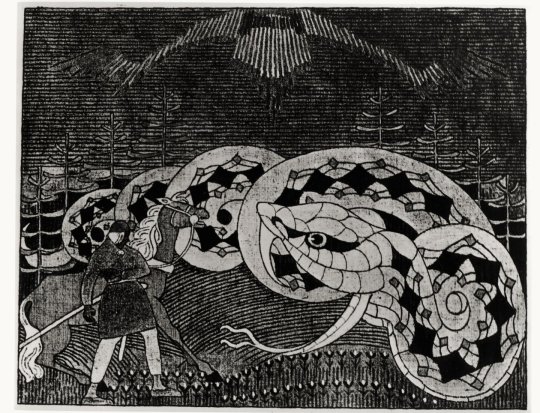
And as we know, Sampo is very heavy on the snake motifs (the head of the snake on his shoulders, the spine wrapped around him, the daggers are its fangs…etc.)
So that’s another interesting link between Seppo Ilmari(nen) and Sampo Koski.
So, why have I gone on this long winded tangent about Seppo Ilmari(nen) when I’m supposed to be talking about Sampo Koski?
Well, that’s because I think Sampo Koski’s real name is (or a variant of) Ilmarinen.
In the Hoyo universe, I believe Ilmarinen came from the planet Kalevala and ‘created’ the persona of Sampo Koski, much like how in the Kalevala, Seppo Ilmari(nen) forged The Sampo.
As I’ve listed above, there’s so many links between the two:
“Air” as a name and “Wind” as an element.
Seppo Ilmari(nen) ploughed a field of snakes to win Hiisi’s daughter’s hand in marriage, whilst Sampo Koski relies heavily on snake motifs for his attire.
Sampo’s two eidolon names that relate to love (which are completely different from the other 4 eidolon names), whilst Seppo Ilmari(nen) is known to be unlucky in love.
I’m pretty damn sure Sampo creates his own bombs and tinkers with the old relics to bring them back to life, whereas Seppo Ilmari(nen) is a smith who created the dome of the sky! They’re both artificers!
And now the revelation that a planet by the name of “Kalevala” exists is no mere coincidence.
So, either Sampo is Ilmari(nen) - or! - Sampo is a puppet (like Herta) created by someone called Ilmari(nen).
(I would love if his 5* version is him with this name).
Right, I’m finished rambling. Gonna go huff some copium...
#honkai star rail#sampo koski#hsr#Sampo#fan theory#theorycrafting#huffing the copium#I really need a 5* of this man#There's probably a bunch of stuff I've missed...#I am literally dying for Sampo content#I WANNA GO BACK TO BELOBOG!#Seriously when I saw the name 'Kalevala' show up as a planet name I lost my shit#Kalevala#finnish mythology
258 notes
·
View notes
Text


lemminkäinen is a character in kalevala who, in order to win the hand of one of pohjola's daughters, is tasked to shoot the swan of tuoni
shooting the swan of tuoni brings doom to those who attempt it, and lemminkäinen even before attempting this is attacked by a man that shoots him into the tuoni river and eventually is described to be "shattered to pieces" by the son of tuoni who protects the river the swan resides in, which i always thought was a pretty gruesome visual....he's later put back together by his own mother, but there's already a famous painting about that part!
#kalevala#finnish folklore#finnish mythology#lemminkäinen#body horror#hey i Can draw the men of finnish folklore too and not just ladies lol
202 notes
·
View notes
Text

Sampo (The Day the Earth Froze) 1959
dir. Aleksandr Ptushko
508 notes
·
View notes
Text

That bloodstained son of Tuoni / struck the man with his sword,
struck fear with his hunger. /
Threw him to the stream of Tuonela / to the Underworld's underlake.
— Kalevala, rune 14, lines 445–8; 451-2.
My rendition of Tuonenpoika, the guardian of the Finnish underworld, Tuonela; This gore-covered son of Tuoni fishes for unwanted visitors downstream, slaying them. He is said to collect the belongings of all the dead flowing down river Tuoni.
#finnish mythology#kalevala#mythology#finnish folklore#tuonenpoika#art#artists on tumblr#digital art#character design#character art#finnish#my art#godkiller#im playing this version of Tuonenpoika as a character in the Godkiller RPG#godkiller RPG#ttrpg#ttrpg art#his colors are based on high iron waters that are common in finnish bogs#as well as rowan and alder trees/berries that are prominent in finnish myth#the only real descriptors about tuonenpoika tell how much he is covered by blood and gore<3
239 notes
·
View notes
Text
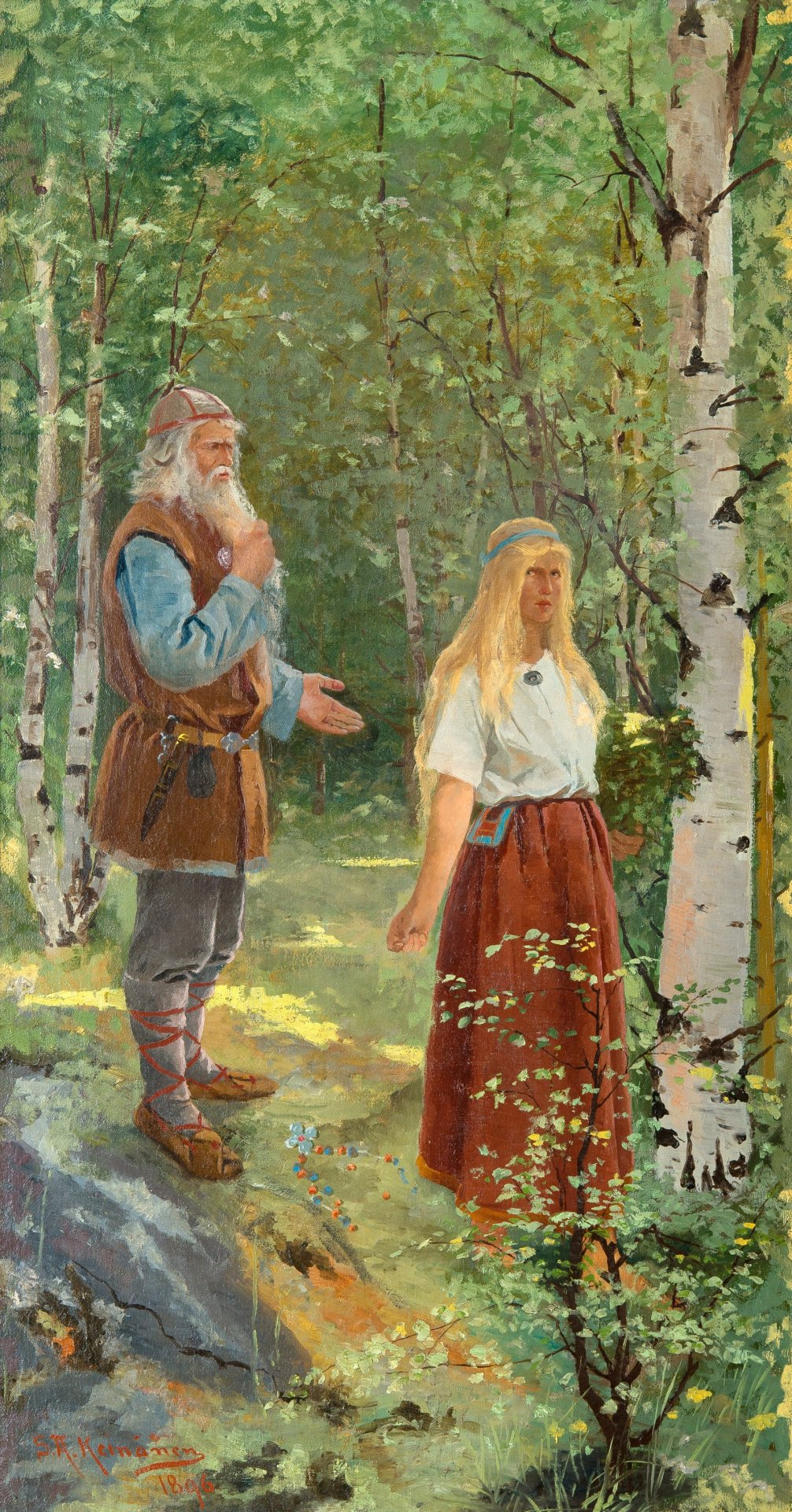
Väinämöinen and Aino, Sigfrid Keinänen, 1896
#art#art history#Sigfrid Keinänen#literary painting#illustration#Kalevala#mythological painting#Finnish mythology#Finland#Finnish art#19th century art#oil on canvas#private collection
164 notes
·
View notes
Text
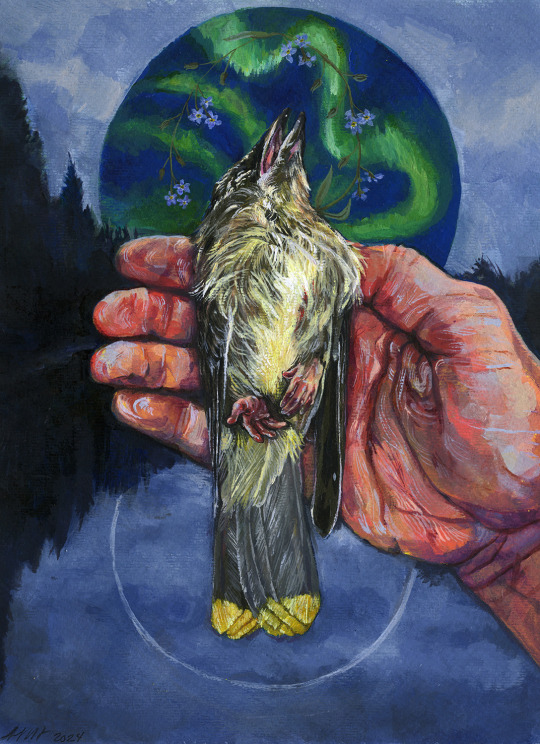
the sad fate of louhi's youngest daughter
in the Kalevala, Louhi the witch is the queen of the underworld, or the far north. she has many beautiful daughters, and at one point Ilmarinen the smith god & Väinämöinen travel to demand Ilmarinen be allowed to marry one of the daughters to replace his deceased wife. Louhi offers her youngest; the daughter, however, spurns Ilmarinen, and in his rage he turns her into a bird - usually characterized as a seagull.
this painting is a response to that story, offering a reality where despite her transformation and subsequent demise, Louhi's youngest daughter is cared for, cradled, treasured. despite what change may unwillingly come, an image of acceptance and peace.
1/3 paintings created in residency at Kristiinankaupunki, June 2024.
#illustrators on tumblr#original art#kalevala#symbolist art#birds in art#mythology inspired art#mixed media art#mixed media painting#traditional media#traditional art#dorkbait art#my art
40 notes
·
View notes
Text
played yunli's companion mission but because i have horrible sampo brainrot all i got out of it was

#granted i had already heard about the kalevala thing before starting the mission#but yeah quick lesson for those who don't know: sampo is the name of a device in finnish mythology said to bring prosperity#and kalevala is the name of the finnish epic poem that the sampo originates from#so with how connected their names are it would be weird for sampo to NOT be connected to this planet#sampo koski#honkai star rail#honkai star rail spoilers#almost forgot that tag sorry#kittay.post
32 notes
·
View notes
Photo

Tapio – The Finnish god of forests and the hunt
Tapio is a Finnish forest spirit or god in Finnish mythology. Hunters prayed to him before a hunt. His wife is the forest goddess, Mielikki (Ref). He is the father of Annikki, Tellervo, Nyyrikki (the god of hunting), and Tuulikki. Fitting the Green Man archetype, Tapio has a beard of lichen and eyebrows of moss.
Tapio is a major character in Kalevala, the Finnish national epic based on Finnish and Karelian folklore, the hero Lemminkäinen offers him and Mielikki prayers, gold and silver so he can catch the Hiisi elk.
Tapio, the personified forest, was sometimes depicted as being the size of a fir tree, fierce-looking, like a human being in the front, but like a gnarled old tree from behind. Often the forest deity was female, occasionally an especially beautiful woman, who enticed hunters or woodcutters staying in the woods overnight; but he, too, turned out to be a rotten old stump upon closer scrutiny. The various forest deities and spirits were generally capricious in nature and had to be constantly placated by those who were dependent on their favours. Thus hunters made offerings to the deity and made sure they did not break any taboos in the forest, such as making excessive noise or shooting unusual birds that might be the forest spirit in disguise.
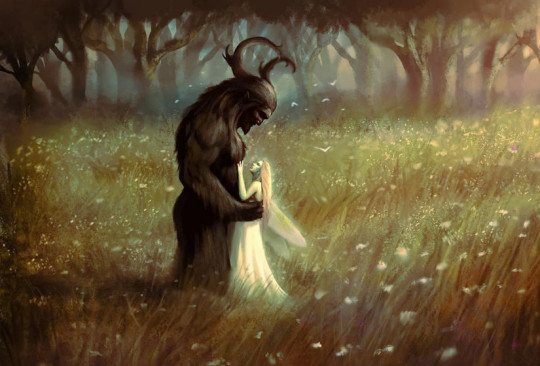
木にまつわる伝説・神話
伝説の樹木の神々 (18)
タピオ 〜 フィンランドの森と狩りの神
タピオはフィンランド神話に登場する森の精霊、または神である。彼の妻は森の女神ミエリッキ(参照)である。アンニッキ、テレルヴォ、ニャイリッキ (狩猟の神)、トゥーリッキの父である。タピオは、グリーンマンの原型に��さわしい人物で、地衣類の髭と苔の眉毛を持っている。
タピオは、フィンランドとカレリアの民話に基づくフィンランドの民族叙事詩『カレワラ』の主要人物である。『カレワラ』では、英雄レミンカイネンがヒイシのヘラ鹿を捕まえるために、彼とミエリッキに祈りと金と銀を捧げている。
森の精霊を擬人化したタピオは、モミの木の大きさで、正面から見ると人間のような獰猛な姿をしているが、後ろから見るとニョロニョロの老木のような姿で描かれることもあった。また、森の神は女性であることが多く、特に美しい女性で、森に一晩滞在する猟師や木こりを誘うこともあったが、彼もよくよく観察すると、腐った古い切り株であることが判明する。森の神々や精霊は気まぐれな性格で、その恩恵にあずかる者は常になだめなければならなかった。そのため、猟師は神に供物を捧げ、森での禁忌を破らないように気をつけた。例えば、過剰に音を立てたり、森の精霊の変装かもしれない珍しい鳥を撃ったりしないようにした。
#trees#tree legend#tree myth#tapio#mielikki#kalevala#karelian folklore#finish mythology#god of forests#tree spirit#lemminkäinen#legend#myths#folklore#green man#nature#art#forest
192 notes
·
View notes
Text

I draw spooky stuff too :3c
26 notes
·
View notes
Text

“Kokko” Eva Vilhelmiina Eskelinen 2019
17 notes
·
View notes
Text

I'm finding the Kalevala very entertaining.
7 notes
·
View notes
Text
Ahti would know the answer!
For SURE!
Ahti would know what a Sampo is!
Yes!
He knows everything!
#dougie rambles#personal stuff#what#no context#finland#finnish mythology#sampo#mythology#folklore#ahti the janitor#Ahti#control#control game#control remedy#control 2019#alan wake 2#alan wake ii#remedy games#gaming#my poor attempt at a joke#kalevala#karelia#karelian
18 notes
·
View notes
Text
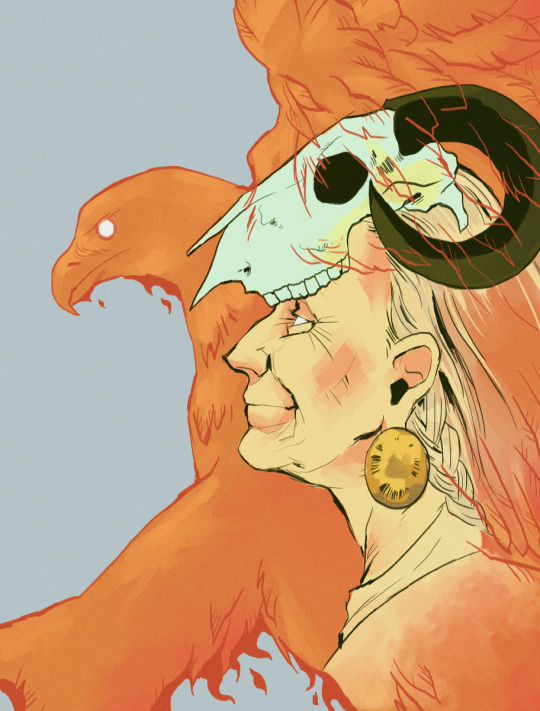
louhi is the powerful witch queen of pohjola in kalevala, and is often interchangeable with loviatar, the finnish goddess of death and disease
though here i wanted to focus on one of her magic abilities which is turning into kokko, a giant bird that's described to be made of iron or fire, or to at least breathe fire (i went with the fire take here)
230 notes
·
View notes
Text


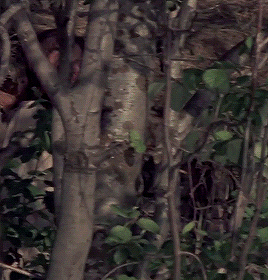
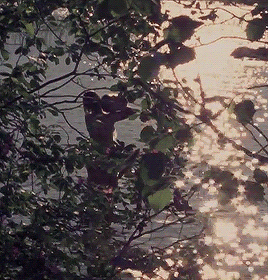




RAUTA-AIKA 1.03 Lemminki
67 notes
·
View notes
